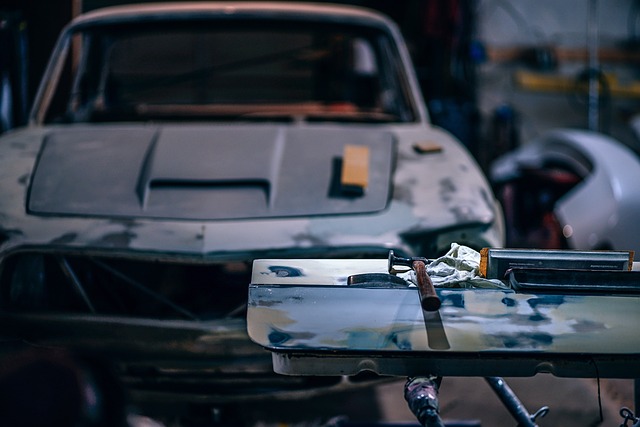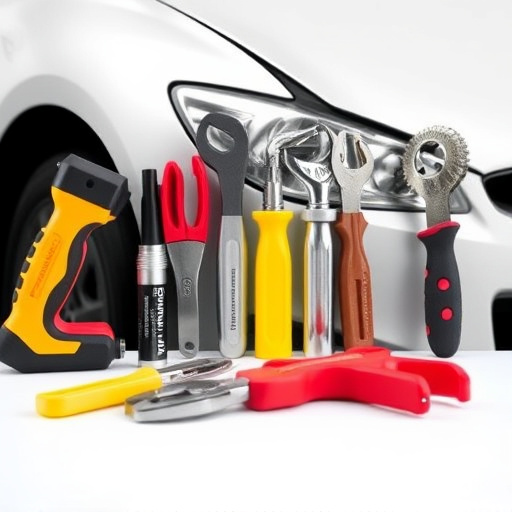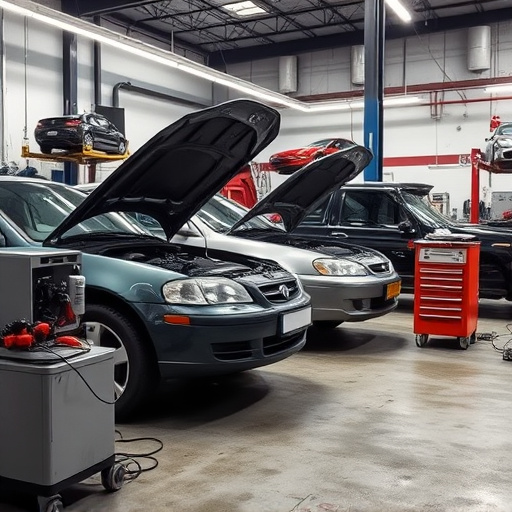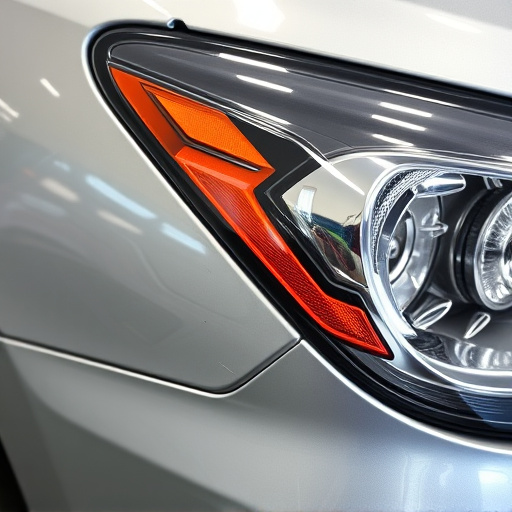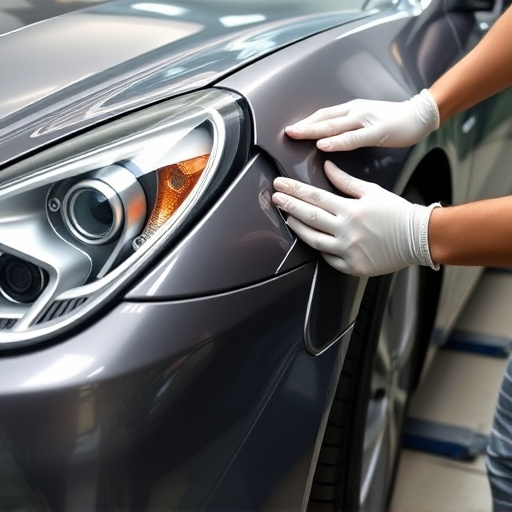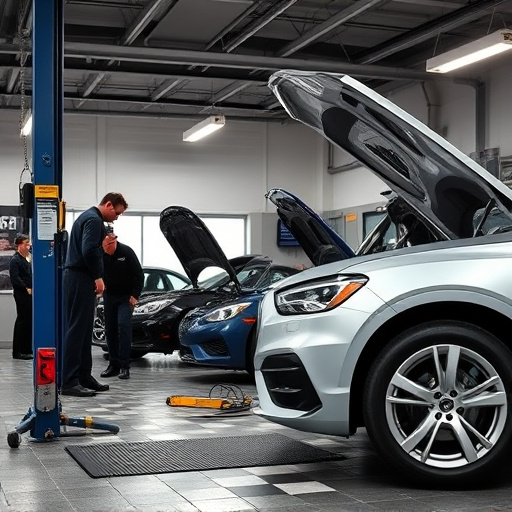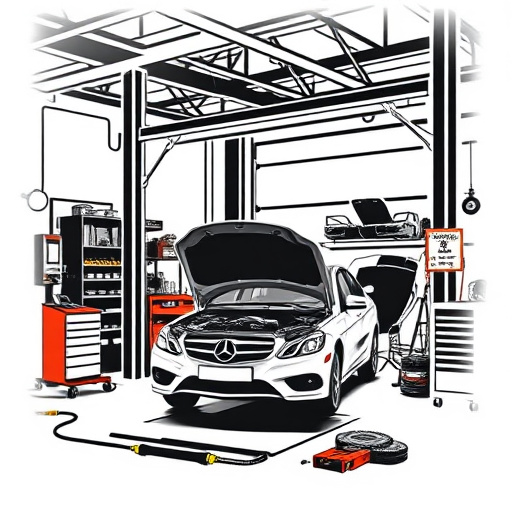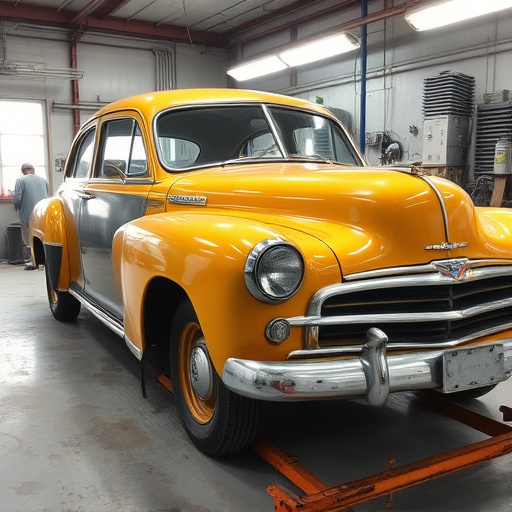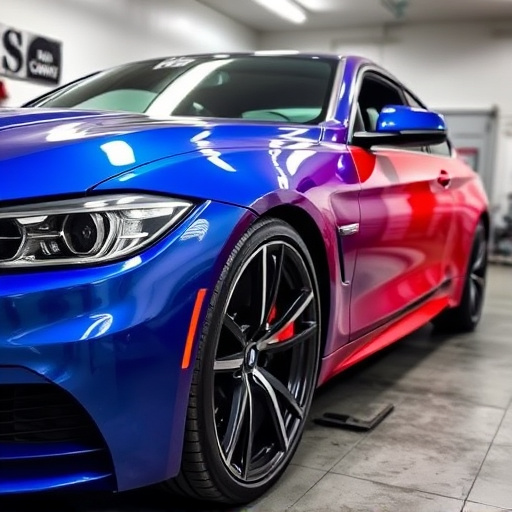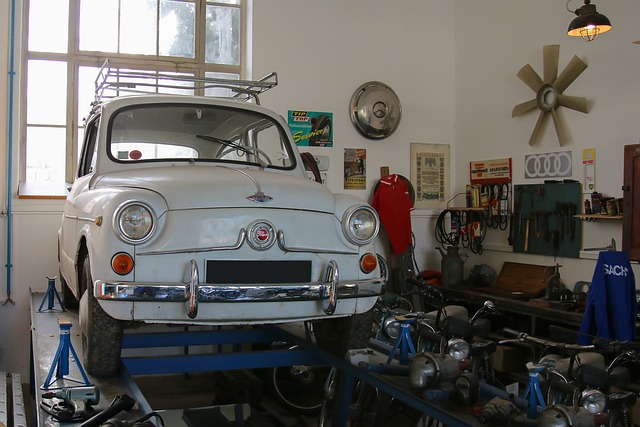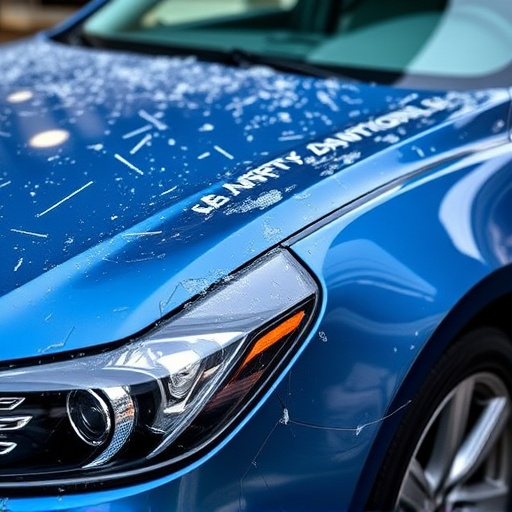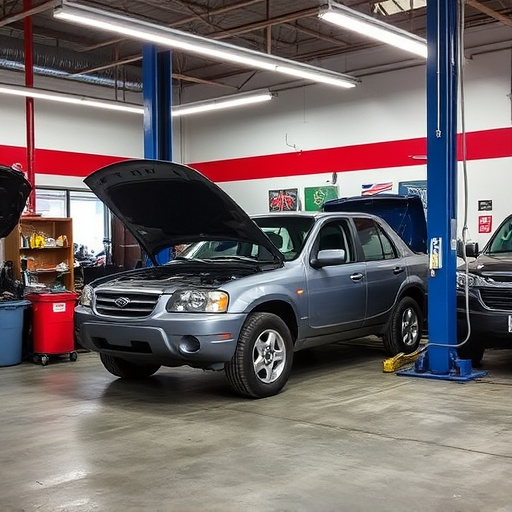Waterborne paint systems provide an eco-friendly and safe alternative to traditional auto body repairs, reducing VOCs, minimizing air pollution, and offering superior coverage, flow, and stickiness. They dry faster, require less preparation, enhance durability, resist cosmetic issues, reduce downtime, and improve vehicle safety, contributing to a more sustainable automotive industry.
Waterborne paint systems are transforming collision repair, offering a more sustainable and efficient alternative to traditional methods. These innovative systems significantly reduce volatile organic compounds (VOCs), minimizing environmental impact. With superior coverage and ease of application, they streamline repair processes, saving time and resources. Moreover, their enhanced durability ensures longer-lasting results, boosting vehicle resale value. By adopting waterborne paints, repair shops contribute to a greener future while delivering high-quality, long-lasting repairs.
- Environmental Friendliness: Reduced Volatile Organic Compounds (VOCs)
- Superior Coverage and Efficiency in Collision Repair
- Enhanced Durability and Longevity of Repaired Vehicles
Environmental Friendliness: Reduced Volatile Organic Compounds (VOCs)
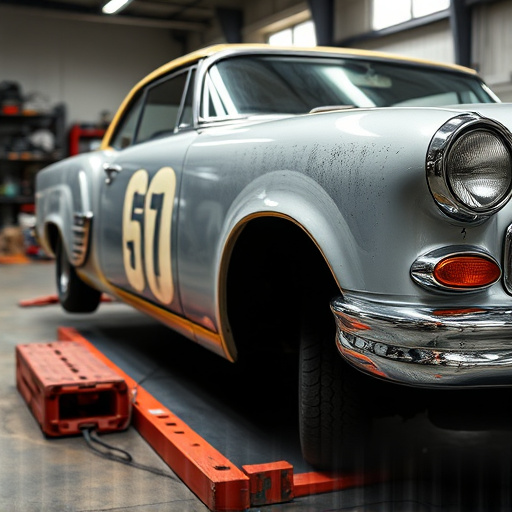
Waterborne paint systems offer a significant advantage in terms of environmental friendliness compared to traditional solutions. These advanced paints are designed to reduce the release of Volatile Organic Compounds (VOCs), which are harmful gases that contribute to air pollution and have adverse effects on human health. By switching to waterborne options, auto body repairs can minimize their carbon footprint significantly.
In automotive repair, especially in bumper repair processes, waterborne paint systems provide a cleaner and safer working environment. The lower VOC content ensures reduced odor and better indoor air quality, making it a healthier option for both workers and customers visiting the collision repair shop. This shift towards eco-friendly practices not only benefits the surrounding environment but also contributes to a more sustainable future in the automotive industry.
Superior Coverage and Efficiency in Collision Repair
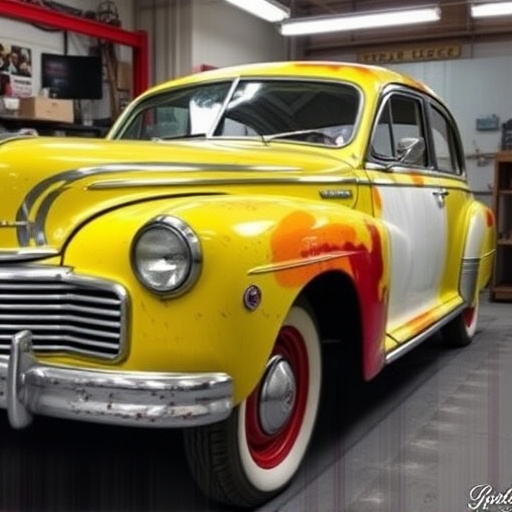
Waterborne paint systems offer a significant advantage in collision repair, ensuring superior coverage and efficiency. Unlike traditional solvent-based paints, waterborne options provide better flow and stickiness, allowing for even distribution of pigment across various surfaces, including those with complex contours or hard-to-reach areas. This feature is particularly beneficial when addressing minor scratches, dents, and fender benders, where achieving seamless finishes can be challenging.
The efficiency gains from waterborne paint systems are multifaceted. They dry faster, reducing the overall repair time, and emit fewer volatile organic compounds (VOCs), making them more environmentally friendly alternatives. Moreover, these paints often require less preparation, such as sanding or priming, simplifying the vehicle dent repair process and potentially lowering labor costs for car damage repair procedures.
Enhanced Durability and Longevity of Repaired Vehicles
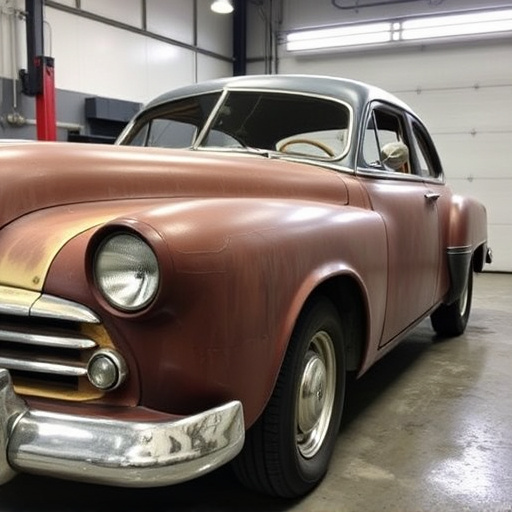
Waterborne paint systems offer a significant advantage in terms of enhanced durability and longevity for vehicles undergoing collision repair. Unlike traditional paints, waterborne options are formulated with advanced resins and polymers that provide superior bond strength to automotive body work. This means repairs last longer, resisting chipping, fading, and other cosmetic issues that can arise over time. The robust finish also protects the underlying material from corrosive elements, ensuring the vehicle retains its structural integrity.
Moreover, these paint systems dry faster than their solvent-based counterparts, reducing the downtime required for auto body repair. This efficiency not only expedites the overall restoration process but also contributes to cost savings for both repair shops and car owners. In addition to aesthetic benefits, the durable finish of waterborne paints enhances the safety of vehicles, particularly when it comes to protecting exposed surfaces such as auto glass replacement.
Waterborne paint systems offer a compelling solution for collision repair, providing multiple benefits that enhance both the environmental sustainability and quality of vehicle repairs. By reducing volatile organic compounds (VOCs), these systems contribute to cleaner air, while their superior coverage ensures efficient work, saving time and resources. Moreover, waterborne paints deliver enhanced durability, extending the lifespan of repaired vehicles. Adopting these innovative systems is a step towards a greener future for the automotive industry.
